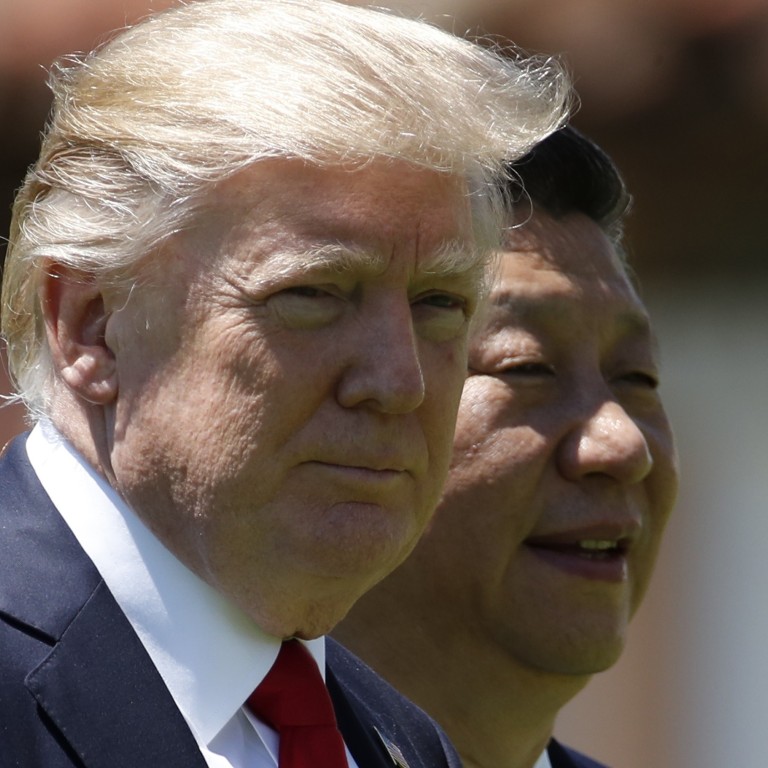
Lost in translation? How verbal mishaps and lack of Chinese-language document threaten US-China trade deal
- Misunderstandings and China’s concerns about being bullied have created distance, says Michael Pillsbury, an outside adviser to Donald Trump
- Having no Chinese-language text of the 120-page draft agreement Beijing was potentially agreeing to could present an obstacle
“Misconceptions” may have put more distance between China and the United States in their efforts to reach a deal to end their trade war, according to Michael Pillsbury, an outside adviser to US President Donald Trump.
Pillsbury, who Trump has called “the leading authority on China”, said misinterpretations about the most recent talks and the lack of a formal Chinese-language version of what the US side was asking for were bigger obstacles than an enforcement mechanism to ensure Beijing carried out its commitments.
The director of the Centre for Chinese Strategy at the Washington-based Hudson Institute think tank, Pillsbury spoke on the sidelines of a Council on Foreign Relations event in the US capital.
The talks in Beijing this week will be followed by a trip to Washington next week by Chinese Vice-Premier Liu He.

Pillsbury said Trump was “not fully pleased” with the deal reached in his visit to China in November 2017, when Commerce Secretary Wilbur Ross led the US side. Trump also “didn’t support the outcome” of talks in early 2018 when Mnuchin was in charge.
“And now we are on the third envoy this year, the Lighthizer year,” Pillsbury said.
“My personal opinion is there was too much optimism when Liu He left [on February 26].”
He added that “I did not agree with” comments White House economic adviser Larry Kudlow made on February 28 in a Fox News interview about the last round of talks in Washington a few days earlier.
“Lighthizer read them the Riot Act. And Vice-Premier Liu He responded. And all of a sudden everything picked up,” Kudlow had said, sending an upbeat message of what he described as “heading towards a remarkable historic deal”, though “we have to hear from President Xi Jinping” to sign it off.
Pillsbury said Kudlow’s remarks implied to Chinese hawks that the US delegation had “bullied” Chinese trade negotiators and brought indignity to Liu.
“Their concerns, which may be paramount concerns, are that China has been bullied and made inappropriate concessions. And we can see this argument is now in the Chinese press,” Pillsbury said.
“I believe China will be tough and not accept some of the American demands” because of fears of having their “nose rubbed in it” after Kudlow’s comments, he said.
“We are still in the Lighthizer year. It’s possible to be optimistic that we can get a deal, but it’s possible also to be sort of sad about so much friction. Unnecessary misunderstandings seem to have occurred.
“Part of the problem seems to be that there is no Chinese-language text of the agreement that the Chinese delegation supposedly was agreeing to. My own concern is that I don’t think China will give up its sovereignty, the right to retaliate if we put tariffs on them again.”
He said that not having a Chinese translation was another source of “possible misunderstandings”, with translation of the 120-page draft agreement into Chinese needed for top leaders in Beijing to agree to it. Sherman Katz, a panellist at the Council on Foreign Relations event and a senior fellow at the Centre for the Study of the Presidency and Congress, said at the event that Pillsbury “may have seen a copy” of the agreement.
Asked by the South China Morning Post whether he was implying a trade deal would not come soon, Pillsbury replied: “Yes, I imply that.”
“In Chinese translation there are a lot of nuances and choices in how you phrase things,” he said.
Both sides leaked their demands during the trade talks in May last year – 28 demands from the US side and 10 from China. It put both leaders under domestic pressure to stand firm on their respective positions, which may have added to “misperception”, Pillsbury said.
But he did not rule out the possibility of concessions by China to reach a deal over the short term because Chinese leaders were “openly worried about instability and slow growth” domestically.

